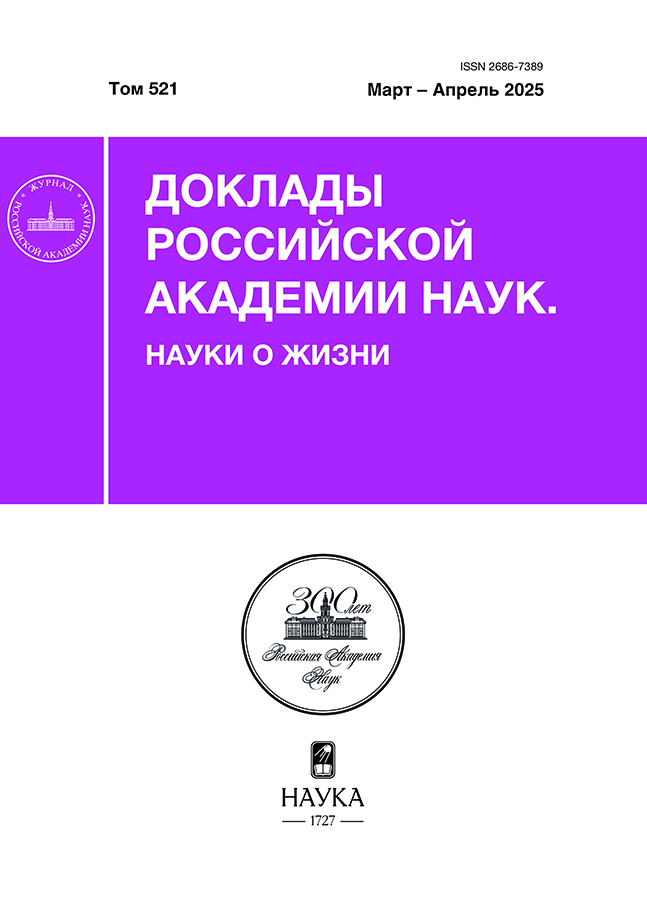Unusual pattern of cerebral electrical activity in the mongolian hamster (Allocricetulus curtatus) during heterothermia
- 作者: Kovalzon V.M.1, Komarova A.D.1, Smagina M.Y.1, Feoktistova N.Y.1, Surov A.V.1
-
隶属关系:
- Severtsov Institute of Ecology and Evolution, Russian Academy of Sciences
- 期: 卷 521, 编号 1 (2025)
- 页面: 285-292
- 栏目: Articles
- URL: https://transsyst.ru/2686-7389/article/view/684076
- DOI: https://doi.org/10.31857/S2686738925020197
- ID: 684076
如何引用文章
详细
Electroencephalogram (EEG), brain and abdominal temperature, and motor activity were recorded for the first time in 18 adult males of facultative hibernator, the Mongolian hamster, during hibernation under controlled laboratory conditions in winter. At room temperature, clear synchronous circadian rhythms of motor activity and body temperature were observed. In most animals, a gradual decrease in external temperature (from 24°C to 4°C) led to a significant increase in motor activity, combined with an increase in the amplitude of circadian oscillations of body temperature. Six hamsters demonstrated torpor bouts and hibernation with radical changes in the EEG up to reaching the isoelectric line, as well as the disappearance of oscillations of brain temperature. It has been found that Mongolian hamsters can easily enter and exit both a state of torpor and a fairly deep hibernation with a decrease in body temperature down to 10ºC during normal sleep periods.
全文:
作者简介
V. Kovalzon
Severtsov Institute of Ecology and Evolution, Russian Academy of Sciences
编辑信件的主要联系方式.
Email: kovalzon@sevin.ru
俄罗斯联邦, Moscow
A. Komarova
Severtsov Institute of Ecology and Evolution, Russian Academy of Sciences
Email: kovalzon@sevin.ru
俄罗斯联邦, Moscow
M. Smagina
Severtsov Institute of Ecology and Evolution, Russian Academy of Sciences
Email: kovalzon@sevin.ru
俄罗斯联邦, Moscow
N. Feoktistova
Severtsov Institute of Ecology and Evolution, Russian Academy of Sciences
Email: kovalzon@sevin.ru
俄罗斯联邦, Moscow
A. Surov
Severtsov Institute of Ecology and Evolution, Russian Academy of Sciences
Email: kovalzon@sevin.ru
Corresponding Member of the RAS
Moscow参考
- Калабухов Н.И. Спячка млекопитающих. М.: Наука, 1985.
- Ushakova M.V., Kropotkina M.V., Feoktistova N.Y., et al. // Rus. J. Ecol. 2012. V. 43. № 1. P. 62–66.
- Shylo A.V. // Neurophysiology. 2015. V. 47. №. 1. P. 84–91.
- Deboer T., Tobler I. // Neurosci. Lett. 1994. V. 166. № 1. P. 35–38.
- Deboer T., Tobler I. // Neuroreport. 2000. V. 11. № 4. P. 881–885.
- Palchykova S., Deboer T., Tobler I. // J. Sleep Res. 2002. V. 11. №. 4. P. 313–319.
- Vyazovskiy V.V., Palchykova S., Achermann P., et al. // Cerebr. Cort. 2017. V. 27. № 2. P. 950–961.
- Heller H.C., Ruby N.F. // Annu. Rev. Physiol. 2004. V. 66. P. 275–289.
- Mohr S.M., Bagriantsev S.N., Gracheva E.O. // Annu. Rev. Cell Dev. Biol. 2020. V.36. P.13.1–13.24.
- Feoktistova N.Yu., Naidenko S.V., Surov A.V., et al. // Rus. J. Ecol. 2013. V. 44. No. 1. P. 56–59.
- Kovalzon V.M., Averina O.A., Minkov V.A., et al. // J. Evol. Biochem. Physiol. 2020. V. 56. № 5. P. 451–458.
- Kovalzon V.M., Komarova A.D., Erofeeva M.N., et al. // Eur. Phys. J. Spec. Top. 2024. V. 233. P.659–670.
- Harding E.C., Franks N.P., Wisden W. // Front. Neurosci. 2019. V. 13. Paper 336.
- Украинцева Ю.В., Соловьева А.К. // Журнал неврологии и психиатрии им. С.С. Корсакова. 2023. Т. 123. №5 (вып. 2). С. 21–27.
- Heller C. // Sleep. 2014. V. 37. №7. P. 1157–1158.
- Ambler M., Hitrec T., Pickering A. Turn it off and on again: characteristics and control of torpor // Wellcome Open Research. 2022. V. 6. Article 313. doi: 10.12688/wellcomeopenres.17379.2
- Rothhaas R., Chung S. // Front. Neurosci. 2021. V. 15. Article 664781.
- Hrvatin, S., Sun, S., Wilcox, O. F., et al. // Nature. 2020. V. 583. P. 115–121.
- Huang Y.G., Flaherty S.J., Pothecary C.A., et al. // Sleep. 2021. V. 44. №9. Article zsab093.
- Shi Z., Qin M., Huang L., et al. // Biol. Rev. 2021. V. 96. No. 2. P. 642–672.
补充文件














